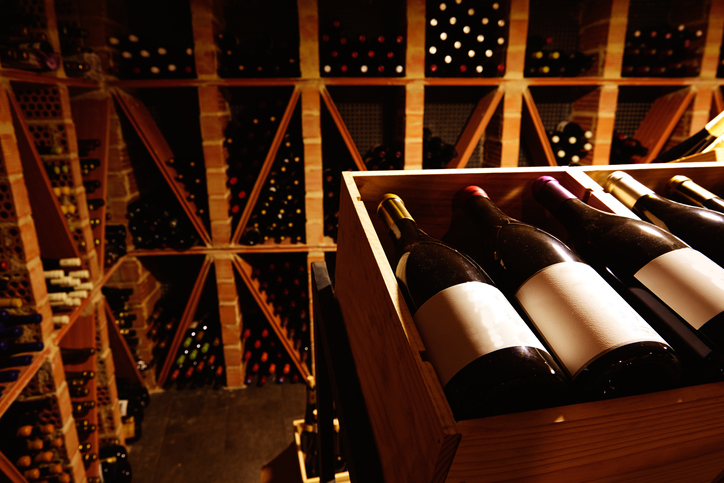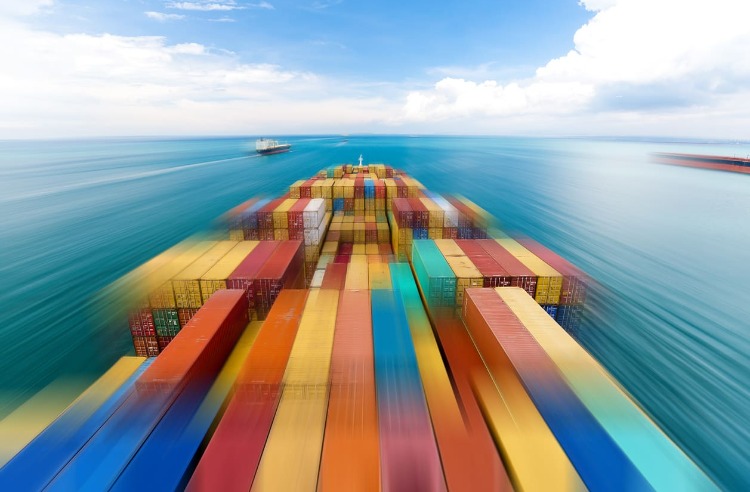How effective wine storage solutions can protect your wine
Whether bought at auction or off a supermarket shelf, wine is a delicate product that is highly sensitive to changes in its environment. During its life, wine may be stored in various places, from warehouses to cellars to kitchen counter tops.So to make sure wine reaches consumers in the best condition, it’s critical for wine importers to understand the ins and outs of wine storage. Read on to find out the answers to key questions about how to protect and preserve the quality of your wine.
A brief history of wine storage
The earliest examples we have of wine storage are clay jars and amphorae. For thousands of years, these vessels were used by ancient civilizations to store and protect their wine.
Later, when the Romans conquered Gaul, they found the natives storing their beer in wooden barrels. These were stronger, lighter, and more portable, so the Romans quickly adopted them to store their wine instead of amphorae.
The next big leap came in the 17th Century with the invention of thick glass bottles. These gave wine more protection against oxidation than barrels and were durable enough to allow wine to be safely moved by horse and cart along rough roads. This development was so successful that we still ship wine in glass bottles today, although now we have lightweight glass options that mean a lighter payload, which is better for the environment.
However, bottles are not enough to protect the wine. Let’s look at what else you need to take into consideration when it comes to wine storage.
What is the proper way to store wine?
Before looking at the best way to store your wines, it’s important to understand what the risks are that pose a threat to your wine under improper storage conditions.
Wine storage risks
Humidity
Humidity is an environmental condition to be aware of when it comes to wine storage. If the atmosphere is too dry or too humid, corks can fail, breaking the seal, causing leaks and allowing air into the bottle where oxygen can spoil the wine. Humidity can also encourage the growth of mold on the corks, which will ruin the wine.
Wine storage goes beyond the cellars and it is important to consider how wine is managed and stored during shipments.
During shipping, excess humidity can also lead to "container rain". This can occur when the temperature inside a container becomes cooler than the air outside the container. Condensation appears on the walls and ceiling, and water droplets rain down onto your wine cases, potentially damaging the labels and creating an environment where mold can grow.
Handling and light exposure
Some less obvious factors can also pose a threat to the quality of your wine.
If it is exposed to excessive vibration during storage, handling, or transport the sediment inside the bottle can be agitated affecting clarity.
The kinetic energy caused by vibrations also changes the chemical composition of the wine and leads to a flatter, sweeter taste, and speeds up the aging process.
Have you ever wondered why some wines come in tinted bottles? Well, that’s because light is another risk to watch out for. Light can also alter a wine's chemical structure, spoiling the taste, color, and aroma. Sparkling wines and lighter-colored wines, like whites and rosés, are more sensitive than darker wines.
Temperature fluctuations
Temperature extremes are the single biggest danger to your wine, so it needs to be stored at a range between +10°C and 20°C (+50°F and 68°F).
If wine is exposed to temperatures higher than 20°C (68°F) for too long, it will age prematurely and become “cooked”. The wine will lose its freshness and taste sour and flat. The color may change with a noticeable increase in browning. Heat damage will also reduce ageability.
At the other extreme, cold can spoil your wine too. If a wine experiences temperatures between +5°C and 10°C (41°F and 50°F) a phenomenon called tartaric precipitation might create a crystalline sediment inside the bottle. At very low temperatures (-7ºC to -10ºC/19.4°F to 14 °F), wine might freeze and push the cork out of the bottle, or even crack the glass, leading to the risk of oxidation. Cold can also reduce the acidity and freshness of your wine.
People often only consider proper wine storage in terms of warehouses, wine cellars, and wine racks, but the same extreme fluctuations of heat or cold can damage your wine during shipping too.
Any wine you import could be exposed to huge variations in temperature. For example, wine imported from Australia to the UK could spend 48 days in transit, leaving Adelaide during the Southern Hemisphere’s winter, crossing the equator, and arriving in London in the Northern Hemisphere’s summer.
However, if you work with an experienced beverage freight forwarder like Hillebrand Gori, we can help you anticipate any risks along your wine’s cargo journey and advise you on the various options you can choose to protect your wine during transport and storage.
So, where should I store my bottles?
When it comes to both short-term and long-term wine storage, there are some simple rules you can follow.
- Avoid locations where temperatures can rise above 20°C (68°F). This means the kitchen or laundry room is a bad option as the humidity and temperature fluctuations caused by cooking and washing can be harmful. Wine should be stored away from direct sunlight or preferably kept in darkness most of the time.
- Avoid storing wine near strong smelling foods and household products as they can contaminate the wine through pores in the cork.
- Minimize vibrations, wine storage facilities should be in low-traffic areas, and during shipping, bottles should be well packed.
Some good wine storage options include:
- Wine cellars: If you have a basement, a wine cellar can be the perfect place to keep your wine in long-term storage. Below ground you can ensure a quiet and dark environment and, with the right equipment, it is a lot easier to control the humidity and temperature.
- Wine racks and cabinets: If these are placed in locations where it is harder to control the environment, they are suitable only for short-term storage. But, if you have a cool, dark space such as a closet, storage area, or pantry, this might be a good option.
- Wine fridge: It provides a controlled environment and it’s a convenient way to store your wine. It keeps to correct temperature and humidity levels and protects your wine from other external factors.
Warehouses for wine storage
If you have invested in a large wine collection or are maintaining stock for commercial purposes, you should consider specialist wine warehouses.
For example, specialist logistics provider Hillebrand Gori operates warehouses based near ports and production areas all over the globe. Each warehouse is climate and humidity -controlled to preserve your wines' quality. With an end-to-end logistics service, Hillebrand Gori can offer wine storage by the bottle, case, or pallet. High value wines that require long term storage are taken care of in state of the art vaults housed inside highly secure warehouses.
Why is wine stored horizontally?
If your wine has a screw top cap or other non-cork stopper, you can safely store the bottles upright, but wines with traditional cork closures should always be stored horizontally. This lets the wine keep the cork from drying out and shrinking, and prevents damaging oxygen from entering.
Should wine be refrigerated?
As white, rosé, and sparkling wines are intended to be served chilled, they can be safely placed in a refrigerator if you’re going to drink them soon. However, a typical home refrigerator that operates at 3°C (37°F) is too cold for anything other than short-term wine storage. At temperatures below 10°C you risk sediments appearing in white and red wine, caused by precipitation of phenolic material. Low humidity can also drying out corks and damage the closure of the bottle.. There are a variety of wine coolers and refrigerators on the market designed specifically for storing wine. These give you more precise control over the temperature and humidity.
Can I store wine at room temperature?
The answer to this depends on the type of wine you are storing, how long you plan to store it for, and what the room temperature is. For read, if your room is between the optimum +10°C and 20°C (+50°F and 68°F), then it’s safe to keep most wines there. Some wines require a cooler temperature for storage as white (10-13ºC).
Organizing and storing wine
Now you understand the potential risks of wine storage and the steps you can take to avoid them, you can store and transport your wine safely and keep it in top condition.
Contact Hillebrand Gori today to find out about our range of solutions to protect your wine during storage and shipping.
Published 06th September 2023, updated 14th February 2024
After opening, recork or seal red wine with a stopper and store it in a dark, cool place.
Humidity is important in wine storage because it prevents the corks from drying out and causing the degradation or the loss of liquid. The ideal range for humidity is between 50-70%. Too high humidity can encourage mold growth.
Signs that wine has gone bad include a musty or vinegar-like smell, a flat taste and visible sediment or discoloration. Regularly check on your stored wine and maintain proper conditions.
Yes, concrete floors can cause fluctuating temperatures and moisture levels, which can negatively affect wine. Use hardwood or tile flooring because it provides better insulation and durability. Avoid carpeting, which can harbor mold or mildew.
How can we help your business grow?





